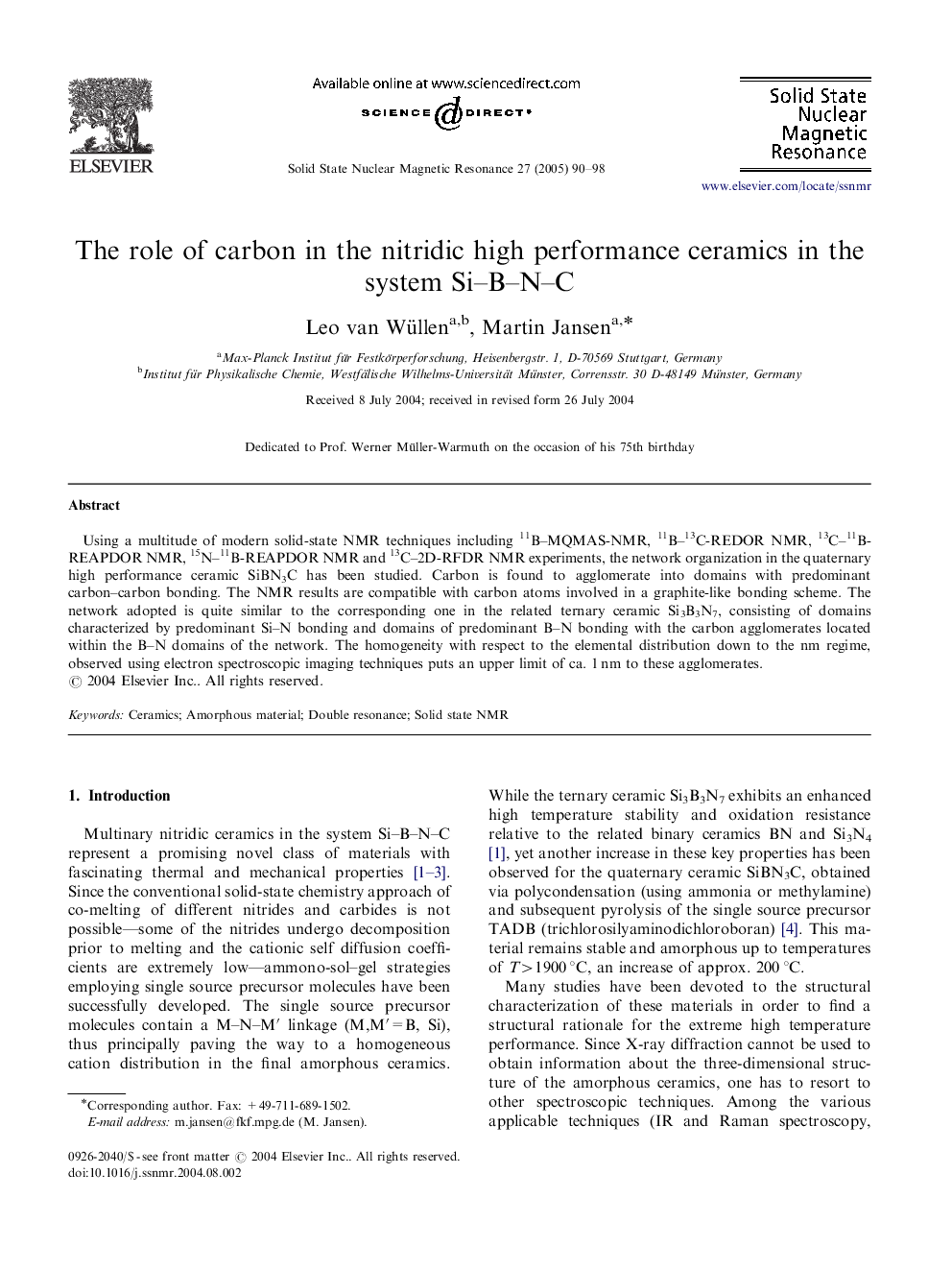| Article ID | Journal | Published Year | Pages | File Type |
|---|---|---|---|---|
| 9594230 | Solid State Nuclear Magnetic Resonance | 2005 | 9 Pages |
Abstract
Using a multitude of modern solid-state NMR techniques including 11B-MQMAS-NMR, 11B-13C-REDOR NMR, 13C-11B-REAPDOR NMR, 15N-11B-REAPDOR NMR and 13C-2D-RFDR NMR experiments, the network organization in the quaternary high performance ceramic SiBN3C has been studied. Carbon is found to agglomerate into domains with predominant carbon-carbon bonding. The NMR results are compatible with carbon atoms involved in a graphite-like bonding scheme. The network adopted is quite similar to the corresponding one in the related ternary ceramic Si3B3N7, consisting of domains characterized by predominant Si-N bonding and domains of predominant B-N bonding with the carbon agglomerates located within the B-N domains of the network. The homogeneity with respect to the elemental distribution down to the nm regime, observed using electron spectroscopic imaging techniques puts an upper limit of ca. 1Â nm to these agglomerates.
Related Topics
Physical Sciences and Engineering
Chemistry
Physical and Theoretical Chemistry
Authors
Leo van Wüllen, Martin Jansen,
